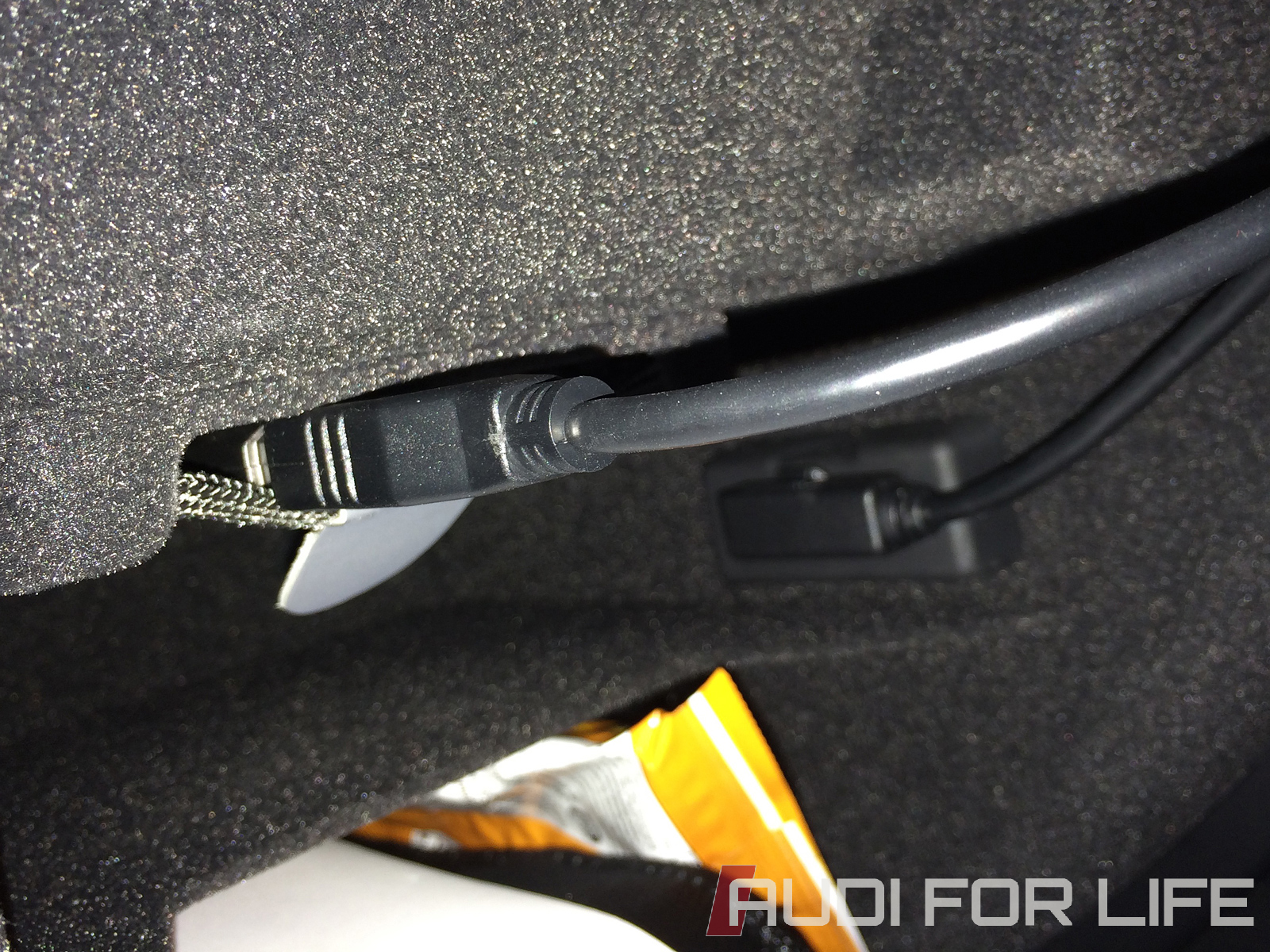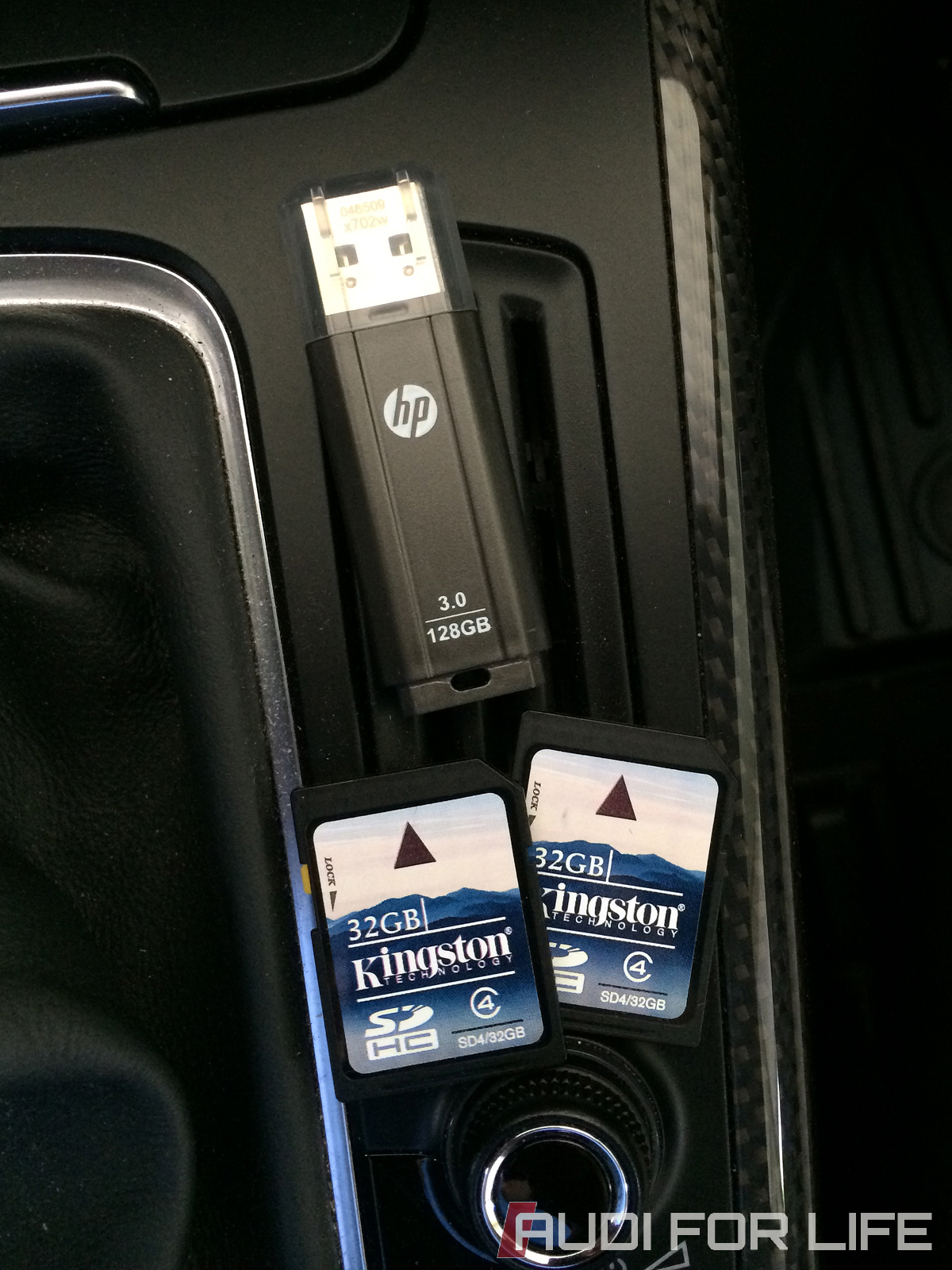Update: I completely forgot about the ~4000 files on a single device limit that the 3G MMI system has when using an SD or USB media source. That does crimp the actual amount of music one could store on a 128GB USB stick.
One of the complaints that I have had with my 2011 Audi S5 is the lack of native Bluetooth audio streaming support with the 3G MMI with Navigation setup. The previous version of the MMI system supports an AMI Bluetooth adapter to allow one to stream music from a smartphone or tablet without plugging in the phone into the MMI system. Sure, there are a couple of third-party options to provide Bluetooth audio streaming for the 3G MMI; but, it isn’t anywhere as seamless or simple to use as the newer MMI Navigation systems now found in most Audi models.
To get around that, I’ve been using two 32GB SD cards to hold a portion of my music and podcast collection. That solution works for the most part, but 32GB per card and the inability to browse content on both cards at once gets old when I want to switch between listening to different albums, genres and podcasts carefully split between the two cards. That said, a combined 64GB was not enough. I have toyed with the idea of re-purposing my 160GB iPod Classic that I use at home; though, the idea of a spinning hard drive bouncing around in a car with sporty suspension makes my stomach turn a bit. That, and I hate dealing with iTunes to load and organize music.

So, I finally plopped down some cash on the Audi AMI USB cable and a 128GB USB stick to expand my music and podcast storage capacity for the S5 to a whopping 192GB. I picked up the AMI cable at Sunset Audi and I went with an HP 128GB USB 3.0 stick that NewEgg had for a good deal. Once the USB stick arrived and I loaded a truckload of music and podcasts on to it, I plugged the USB stick into the USB end of the AMI cable and clicked the AMI cable into place. I used the little mesh pocket next to the AMI port to nestle in the USB stick to keep it from thrashing about.

I turned the MMI system on and switched the media source over to USB and it took about 45 seconds to scan through and list the contents of the root directory on the stick. I hadn’t created any specific playlist files yet, so I don’t know how long it will take the parse a set of playlists.

Since the USB stick contents included a good number of podcast tracks, turning on the Shuffle mode meant that I would need to skip over those tracks when I just wanted to listen to music. The MMI system doesn’t provide a means to exclude directories or genres from the shuffle list, I opted to dedicate the, now freed up, 32GB SD cards for podcasts. Yes, it does mean that I would have to switch sources, but at least I can leave the USB stick for music and the SD slots for podcasts.

For the under $200, I can now carry around about 192GB of music and podcasts around with me for those really, really long road trips or for when I my indecisive mind can’t figure out what songs it wants to listen to. It’s also cheaper than picking up an iPod Classic and the hair replacement treatments required after dealing with iTunes. I say, that’s money well spent.

So what is the meaning of 128Gb if you can not play from this more than 4000 files and 4000 is about only 40Gb or from usb flash plays more than 4000?
Although the 4000 file count limit is a bit of a showstopper when it comes to smaller MP3 or AAC files, I load the USB stick with a lot of podcasts that are 20-50MB in size. Also, I have some long electronica/industrial mixes that are 40-50 minutes long, so a handful of those eat up a good amount of space as well.
For most people, a 32GB or 64GB USB stick will be more than enough and still cheaper than an iPod Touch.